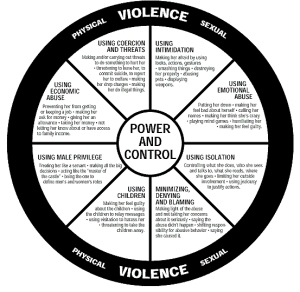Behind Closed Doors: Fear and intimidation tell the real truth about domestic violence
March 7, 2011
Behind Closed Doors
Fear and intimidation tell the real truth about domestic violence
By Judy Chaet
Sheila walked into my office; she was a bundle of nerves. She looked down at her hands, which were twisting a handkerchief round and round between her fingers. She had come back in to talk about her problem (she was having trouble sleeping and remembering things). The first thing she said was, “I’m not one of those battered women — he doesn’t hit me.”
Sheila and I met many times over the next six months. Her story came out in bits and pieces. It was true: he didn’t’ hit her, except for that one time — the time he broke her jaw, her cheekbone and her favorite mixing bowl (all over the kitchen). After that, he never hit her again. But there was the time he cut the cord to the telephone, and wouldn’t let her fix it — because she talked to her 85- year- old mother too much. There was the time he threatened to kill her twin sister, if she ever left him. There were the times he kept her awake all night, telling her what a lousy mother she was and that she couldn’t even keep the house clean. And then there was the time he hanged her dog in the garage, because she couldn’t make it stop sleeping on the sofa.
The thing about domestic violence is that it is insidious — it is, by definition, private and “behind closed doors.” The true depth and impact of the violence are almost impossible to quantify. Was Sheila a battered woman? YES. The number of hits, or who hit whom first, does not define abuse. It is, rather, a pattern of behavior. Was Sheila afraid of her husband? You bet.
The more telling point is who has the power — and who is afraid. One partner in a relationship may have been the one to “hit first,” this time. But what went on in the hours or days before that hit? Domestic violence goes far beyond the physical violence. It is also the coercion and threats, the sexual abuse, the intimidation, the isolation, the economic abuse, the use of the children as a threat (or to make her feel guilty). And, most often, it is the minimizing of that abuse – the denial and the blame.
The minimizing, denial and blame are all cruelly intentional acts designed to make the victim feel responsible for the abuse. Sheila believed that her actions were the cause of his violently abusive behavior.
We have all been taught from infancy that the well-being of homes, families and marriages is the responsibility of women. When there are problems in these arenas, we look to the women first: “Where was she while the children were doing that?”“Why does she stay?” These are the questions we are used to hearing, and asking. These are the questions that battered women ask themselves. And these questions are reinforced by everything that batterers tell their victims: If it’s her fault, then there must be something she can do to stop the abuse. But the truth is there is nothing she can do to stop the abuse:
it is the batterer’s intentional choice to batter.

